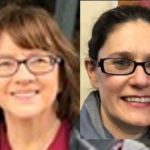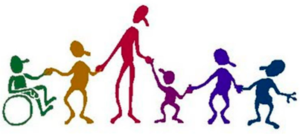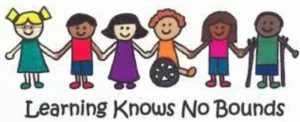Authored by:

Elizabeth Walton & Kerryn Dixon
Elizabeth Walton is an Associate Professor in the School of Education at the University of Nottingham. She is a member of the forum of the UNESCO chair for Teacher Education for Diversity and Development and is also a visiting Associate Professor at the Wits School of Education.
Kerryn Dixon is an Associate Professor in the School of Education at the University of Queensland and a visiting Associate Professor at the Wits School of Education.
How do our picture choices represent (or mis-represent) the circumstances and practices of inclusive education?
When we want to make presentations or reports appealing, we add images to them. Often, this means searching for images on a search engine like Google. We enter a keyword or phrase and pages of individual images appear. We usually select an image from the first page presented to us. It is easy to copy and paste images without looking at the host website(s), or the text(s), or artists who created the images.
The order in which the images appear is not accidental. Search engine optimisation (SEO) uses algorithms to rank images in an online search. Images that get attention, get more attention (Rogers, 2013). As a result, search engines powerfully influence how we see the world.
Online representation matters. For example Noble (2013) shows how black women and girls are represented as overly sexualised in a Google search. However this is not how they themselves account for their social, political or cultural lives. Women in science, engineering and technology are represented in stereotypes in online media, with very little diversity. We researched how a particular field of education, inclusive education, is represented.
About inclusive education
Inclusive education is a rights-based response to educational exclusion. It came to the fore in the 1960s by parents who challenged segregated education for their disabled children. Various United Nations initiatives have given impetus to inclusive education. It is now regarded as a fundamental human right of all learners (UN, 2016). The aims of inclusive education are:
- Access to, and progress in high-quality education opportunities at all educational levels;
- Accommodating the differing requirements and identities of individual students;
- Full and effective participation of all students;
- Recognition of diversity and combating discrimination and harmful stereotypes;
- In-depth transformation of the culture, policies and practices of education systems.
Inclusive education is a thriving academic field of study. Most countries have developed policies about it, and numerous books and websites offer advice for teachers and schools, and inclusive education has an increasing multimodal presence. In a world in which the visual is so powerful, it is important to understand how ideologies are encoded in multimodal texts.
The research process
A google images search for ‘inclusive education’ yields thousands of images. We counted the first 100 images that appeared, including photographs, book covers, organisational logos and presentation slides. Our research focused on 73 graphic illustrations. We followed Serafini’s (2011) Noticings-Meanings-Implications Chart as a preliminary analysis. We then counted the number of times different features occurred, which gave a sense of the recurring patterns. The final step was to conduct a multimodal discourse analysis using Kress and van Leeuwen’s Grammar of Visual Design. This framework offers a detailed language of analysis for images and makes it possible to identify the discourses that are layered into images.
The images that appeared in our search
We found that the images reflect many of the aims of inclusive education, but they also undermine these aims in ways that concern us.
Diversity is an important aspect of inclusive education. The images do show people of different genders and different races. But our analysis shows that most people are white, and other races are inserted as a contrast to whiteness. Most images have no backgrounds, like in Figure 1. When there is no background, it is easy to forget about the contexts where social and racial inequalities happen. For example, the multi-coloured human beings like those in Figure 1 portray a fantasy world in which everyone is equally a different colour. This obscures the reality of oppression and inequality based on people’s real skin colour.
 Figure 1. Multi-coloured abstract humans. This version of the image available here. Use is permitted under fair use/dealing law.
Figure 1. Multi-coloured abstract humans. This version of the image available here. Use is permitted under fair use/dealing law.
The images also suggest that inclusion means the presence of at least one disabled person. Disability is usually shown as a person using a wheelchair. In images like that in Figure 2, the wheelchair is oversized for emphasis, and shown in profile to draw attention to the wheel. This simplifies disability and hides the actual challenges that society creates for disabled people. While disabled children are especially vulnerable to exclusion across the world, UNESCO reminds us that inclusive education is concerned with educational access, participation and success for all learners.
 Figure 2. Diversity and disability. This version of the image is available here. Use is permitted under fair use/dealing law.
Figure 2. Diversity and disability. This version of the image is available here. Use is permitted under fair use/dealing law.
While it looks like diversity is celebrated, the images actually show that sameness is valued. Many humans have no faces, or the images repeat patterns of cut-out humans, or people are drawn as lining up together as in Figure 3. What this tells us is that diversity is accepted, so long as it conforms to established norms.
 Figure3. Happy children. This version of the image is available here. Use is permitted under fair use/dealing law
Figure3. Happy children. This version of the image is available here. Use is permitted under fair use/dealing law
Most images of inclusive education are of children, usually without adults. The children are shown as stick figures or cartoons in bright primary colours. Showing children like this makes inclusion ‘cute’ and for young children. The exclusion of older children and adults in the images contradicts inclusive education’s emphasis on access to all levels of education. Together, the images present an ideal, uncomplicated world of young children playing together. We don’t see the difficulties that different people face in accessing equitable educational opportunities.
Connection appears important through images that show hand-holding, hugging, and people close to each other. But this is a compulsory togetherness, with people arranged in lines as if they’re in a regiment or parade. Connection is also conditional. Disabled people are hugged or touched, but they seldom touch others. Figure 3 requires the person in the wheelchair to contort their body to hold hands with the people on either side of the line-up. In some images, like Figure 4, people using wheelchairs are on the side, or separated from others by the shape and position of the wheelchair. It seems that connection is defined by able-bodiedness.

Figure 4. Separated by the wheelchair. This version of the image is available here and use is permitted under fair use/dealing law.
A celebratory, happy tone is created through the use of bright colours; smiling faces; waving hands; vigorous activity like cartwheeling, skipping and jumping; gazing into the sunrise. In one image there is a procession of children carrying balloons and candyfloss. The message is clear: inclusive education is a ‘good thing’. But this utopian vision is illusory and detracts from racism, ableism and other forms of oppression. It suggests that inclusive education is a distant goal, rather than an urgent imperative and a fundamental right of all students.
Education is mostly absent from the images of inclusive education. As a result, the images suggest that inclusive education is just about happiness and belonging. The challenge of ensuring equitable learning outcomes for all is side-stepped. No-one needs to do the difficult work required to change school cultures, policies and practices.
Our focus was inclusive education where the available images are limited, simplified and stereotypical. This exercise draws our attention to other educational fields where images both support and subvert their concerns. We conclude that advocating for more or better images is not a solution. Ultimately, despite the saturation of images in our daily lives, images are not always best suited to capture complex ideas of educational access, equity, and social justice. We need to think more carefully about the messages created by the images that we search for and use.
[A .pdf version of this article is available for download here]
Authored by:

Elizabeth Walton & Kerryn Dixon
Elizabeth Walton is an Associate Professor in the School of Education at the University of Nottingham. She is a member of the forum of the UNESCO chair for Teacher Education for Diversity and Development and is also a visiting Associate Professor at the Wits School of Education.
Kerryn Dixon is an Associate Professor in the School of Education at the University of Queensland and a visiting Associate Professor at the Wits School of Education.
Great article – in depth and critical whilst also sensitive to society’s limitations and wellmeaning behaviours. As an occupational therapist and as an aunt to a teenager with disabilities, I found it to ring very true….young children with disabilities are cute and cuddly and easy to include, but teens and adults are much more likely to be ostracized and have their rights trampled. Dr Lee Randall, South Africa